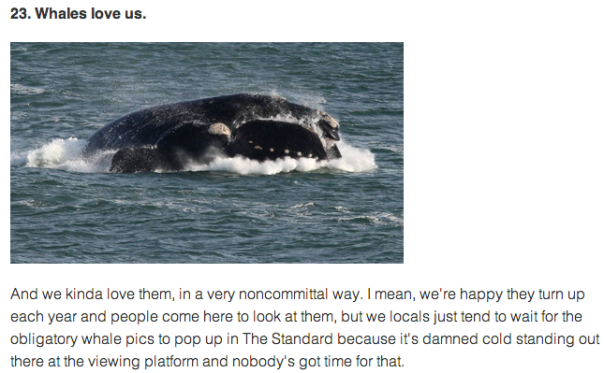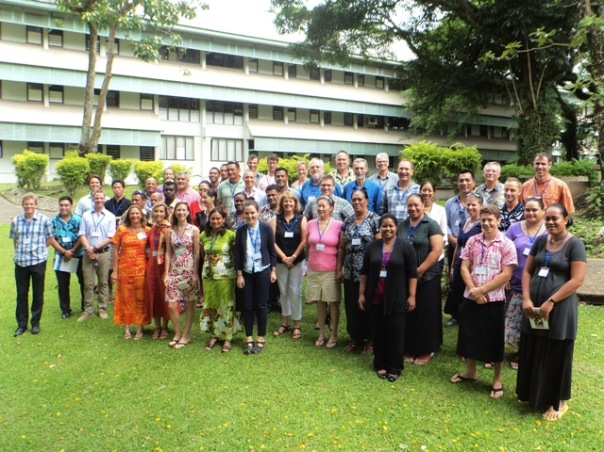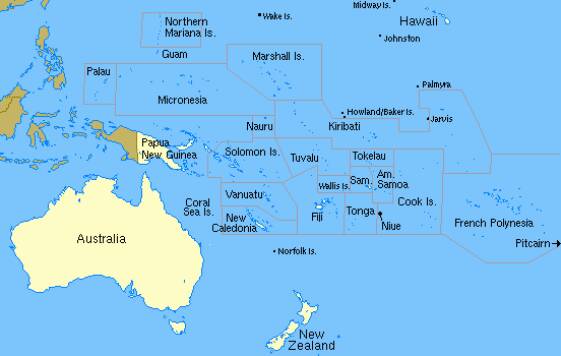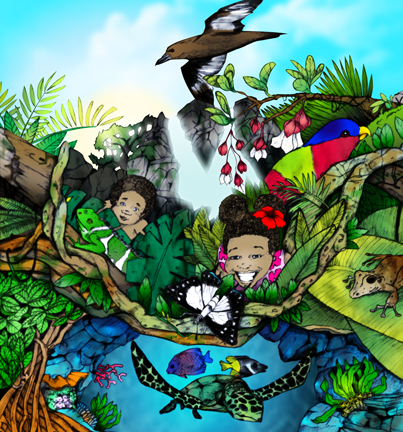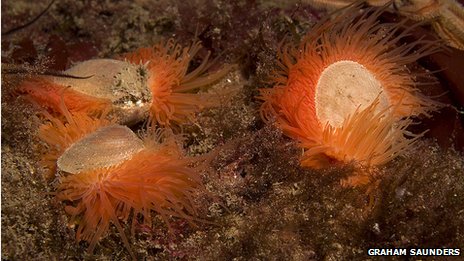Blog Archives
Greenland sharks can live to 400 years old, only reach sexual maturity at 150
Researchers using radiocarbon dating have determined that Greenland sharks, slow-moving giants that live in the cold, dark waters of the North Atlantic, are the longest-living vertebrates on Earth, with one recorded as being 400 years old. Which explains the old Greenland shark quip that goes something like: “God must like practical jokes; why would He make […]
via Scientists say Greenland sharks can live for 400 years — The Cotton Boll Conspiracy
Shark Week snubs scientists, increases fear of sharks
As is becoming common this time of year, my Twitter feed has been swamped with Shark Week vitriol – from swimmers who are now more afraid to go in the water to scientists angry at the lack of consultation that goes into a few of the fake documentaries appearing during the event.
Apart from the fact Discovery Channel ignores the rest of the world when it comes to sharing Shark Week with non-Americans, from what I’ve seen of the clips there seems to be a dearth of well-researched, informative programming.
Christie Wilcox writes for the Discover Magazine and her summaries of the week should be required reading for anyone watching Shark Week, including this post on falling ratings and viewer angst:
“It’s the third day of Shark Week, and Discovery has already come under fire for their programming choices. Their big special on kick-off night—Shark of Darkness: The Wrath of Submarine—turned out to be another fake documentary, making up people and events to perpetuate the idea that a 30+ ft long great white patrols the coast of South Africa. The legend of Submarine is a particularly fishy topic choice, as its origin can be traced to the 1970s when some journalists decided to make up a story to see how gullible their readers were.”
As some commenters have noted this week, if the focus was spread from great whites to lesser-known threatened species of sharks, their public profile and survival chances might improve. A great white throwing a seal pup in the air or biting a cage might make for exciting TV but shouldn’t the week be about promoting all sharks, not just the most photogenic ones?
Local marine sanctuary loved and ignored in equal measure
This is a great recent video from the Friends of the Merri Marine Sanctuary, a small and dedicated group helping – as one goal – to remind local people about the amazing natural features and marine life on their doorstep.
At a lecture and networking day on the weekend hosted by Deakin University and the Victorian National Parks Association, a member of the Friends group mentioned how hard it can be to get the support and interest of people outside the conservation community. I could see similar parallels with another spectacular occurrence that Warrnambool people often ignore.
Living near one of the calving grounds for southern right and humpback whales, people in this area can tend to be ambivalent about the excitement generated in the tourism industry each time the whale watching season approaches.
A recent humorous list of 30 things only a local would understand had this gem at number 23:
Funny (maybe just as a Warrnambool local) but it highlights that disinterest I spoke of – we’re happy the whales are here but we’re just as happy to ignore them because it doesn’t suit us to stand around for hours (and it can be hours between ‘showings’). Same goes for conservation – local people are generally happy that someone is doing it but not bothered to get involved themselves.
What can you do with apathy like that? It was an open question to the weekend’s session and though there were some good suggestions, as usual it was hard to come up with the perfect answer. My idea was to keep the good work these people do at the forefront, tell the media, tell politicians, help to get relevant policy change at the state and federal level and let your own passion inspire other people. Al Gore was one who helped ‘cure’ apathy over climate change on a global level but it’s even more important to make small communities like ours care about the natural wonders they take for granted.
Oceanic microplastics: the implications of tiny pollution
My classmate Dom Lawler deserves most of the credit for producing this video on microplastics, made in less than four days using iMovie for a university assignment on aquatic pollution.
Check the film out and watch some other related one on YouTube if it sparks your interest.
Here’s some quick details on the plastic pollution issue:
– 10% of the 280 million tonnes of plastic produced annually worldwide ends up in the ocean, contributing to 60−80% of all marine debris (Kaposi et al. 2014)
– First reports of plastic litter in the ocean were in the 1970s (Andrady 2011)
– Plastics could take centuries to completely mineralise or biodegrade (Moore 2008)
– 10% of all static fishing gear – including plastic nets, fishing line and ropes – is lost worldwide (FAO 1991)
– In the environmental context, microplastics are regarded as pieces of plastic debris less than 5mm in size
– Studies have found that 267 species of marine organisms worldwide are known to have been affected by plastic debris, a number that will increase as smaller organisms are assessed. (Moore 2008)
References (and other useful video sources)
Plastic Oceans, broadcast on Catalyst, ABC TV1, 6 September 2012:
http://www.abc.net.au/catalyst/stories/3583576.htm
Plankton film clip: Ren Kyst, Norway www.facebook.com/RenKystFilm
Plastic planet: www.natracare.com/sisters http://youtu.be/73sGgmZoMBQ
FAO (Food and Agriculture Organization), Canada, 1991. In: Smith, A. (Ed.), Report of the Expert Consultation on the Marking of Fishing Gear, Victoria, British Columbia, Canada, 14–19 July, 1991.
Moore, CJ 2008, ‘Synthetic polymers in the marine environment: A rapidly increasing, long-term threat’, Environmental Research, vol. 108, no. 2, pp. 131-9.
Andrady, AL 2011, ‘Microplastics in the marine environment’, Marine Pollution Bulletin, vol. 62, no. 8, pp. 1596-605.
Kaposi, KL, Mos, B, Kelaher, BP & Dworjanyn, SA 2014, ‘Ingestion of microplastic has limited impact on a marine larva’, Environmental Science and Technology, vol. 48, no. 3, pp. 1638-45.
Marine Spatial Planning – one of the daily session summaries
I was asked by a few people at the Marine Spatial Planning workshop in Suva over the past week to post a few updates on my blog (the original articles I wrote appear on the Secretariat of the Pacific Regional Environment Program website)
What is Marine Spatial Planning, you might ask? Many attendees did this week and among many complex definitions I heard this was the easiest to comprehend: “It is the process of analysing and making recommendations on the distribution of human activities affecting coastal and marine areas. A key goal is to balance ecological, economic, social and cultural objectives.”
26 November 2013, Steve Pogonowski, Marine Spatial Planning, Suva Fiji – Marine spatial planning will become ever more vital as the Pacific islands and territories deal with the impacts of rising sea levels, ocean acidification and ocean warming, attendees at a workshop at the University of the South Pacific in Suva, Fiji, heard yesterday.
The second day of the Marine Spatial Planning workshop looked at climate change and other challenges to central and west Pacific countries and territories, case studies of marine spatial planning across the region and new projects being brought in to assist cross-boundary planning.
Attendees on the second day represented organisations in countries and territories including Wallis and Futuna, Solomon Islands, Tuvalu, French Polynesia, Micronesia and Samoa.
Sangeeta Mangubhai, Senior Programme Officer for IUCN Oceania Regional Office, said she hoped participants would all gain a greater understanding of initiating and carrying out good marine spatial planning.
“One of the things I really liked was listening to the case studies and also hearing some of the regional efforts being made to support countries if they decide to implement marine spatial planning from coastal waters out to their EEZ (Exclusive Economic Zone),” she said.
“Especially for our Pacific Island participants – and there are some here representing their governments – I hope they can gain a real understanding of marine spatial planning is and the role it can play in managing the valuable resources in their countries to achieve the ecological, social and economic outcomes that they want.
“If they undergo a marine spatial planning process, they now realise there are experts and experiences in this region that they can tap into to get support and assistance.”
Discussion topics included the success of Locally Managed Marine Areas in involving communities in conservation; how data collection on tuna fishing can track the effects of climate change; and the importance of local socioeconomic, governance and ecological issues in cross-boundary planning.
François Gauthiez from the French Marine Protected Areas Agency (AAMP) said the workshop had also generated interesting discussions on various software tools and how they can be used to present data simply to help island communities develop their fishing and conservation plans for the future.
Palau weighs up cost of banning foreign trawlers; Fiji conference beckons
The MPA News is a regular and very word-heavy newsletter with usually at least newsy story to interest those not excited by the remaining policy-driven interviews (some would call them ‘boring but important’).
This piece from the latest newsletter looked at Palau’s plan to ban foreign commercial fishing from their Exclusive Economic Zone (200 nautical miles from a country’s coast), a strategy that will deprive the country of license revenue but boost the local fishery and of course the sustainability of fish populations for the long-term.
Earlier this year, President Tommy Remengesau of Palau announced he intends to ban foreign commercial fishing throughout his nation’s 604,000-km2 EEZ. A study group is now examining the “total marine sanctuary” proposal, as it is known. The examination will include how the large protected area would be financed.
Like Kiribati and other Pacific Island nations, Palau generates revenue from the sale of commercial fishing licenses to foreign tuna vessels. The closure of Palau’s EEZ to foreign commercial fishing would result in a loss of fishing license revenue. Umiich Sengebau, Palau’s Minister of Natural Resources, Environment, and Tourism, told MPA News the marine sanctuary study group is exploring all possible options for offsetting that revenue loss, including conceivably a reverse fishing license mechanism like PIPA’s.
That being said, Palauan waters are not as tuna-rich as other nations in the region, and as a result Palau is not as dependent on fisheries revenue as Kiribati and others. Palau has focused instead on other revenue sources, particularly the use of environmental protection as a lure for foreign tourism.
This led Palau to designate its waters as a shark sanctuary in 2009.In a speech in Monaco this year, President Remengesau said, “People have started to equate Palau with sharks. Palau has effectively cornered the market on seeing sharks. This is only the beginning of what the protection of apex predators can accomplish for us.”
An article on the total marine sanctuary plan, as well as Palau’s new initiative to test the use of drones to enforce its shark sanctuary, is at http://bit.ly/totalmarinesanctuary
On another note, I’ve signed up to volunteer at the 9th Pacific Islands Conference on Nature Conservation and Protected Areas in Fiji in December.
A uni lecturer (written about previously for her efforts in promoting seaweed cuisine) helped to initiate contact with the Secretariat of the Pacific Regional Environment Program, which saw my previous PR and journalism experience as a useful addition to their conference team.
Should be a fascinating experience, as well as chance to explore more of Fiji in between long days at the conference!
Circle hooks more humane choice for sharks, rays and sportfish
Just saw this Southern Fried Science post (nothing to do with chicken, everything to do with shark conservation) about the benefit of using circle hooks – a method I’m yet to try but definitely support.
Here’s their description of the hooks:
Circle hooks are used by recreational and commercial hook-and-line fisheries (and many longliners) to reduce hooking mortality in large fishes, sharks, and bycatch animals like sea turtles. The idea is that the hook more or less works by itself without being set like a J-hook. The shape of the hook prevents swallowing and encourages hooking in the corner of the mouth, where it’s less likely to do serious damage.
Some great shots in the post show how easy it is to remove circle hooks, up against the traditional hook technique. Many fisherman now cut off the barbs from their standard hooks – they may lose more fish but it helps cut down on damage, especially for sportfishing and the difficulty of returning undersize fish once they have been foul-hooked or swallow a barbed hook.
Flame shell beds disovered off Scottish coast
I’ve been meaning to post this for a few weeks but kept getting distracted with job hunting and government study payment interviews and all that exciting stuff.
The BBC reported that a colony of about 100 million flame shells have been discovered off the west coast of Scotland near Skye, as part of a survey of Marine Protected Areas (MPA). The scallop-like animals were an unexpected find in so great a number.
The report describes them as a ‘living reef’, which may have been Marine Scotland’s words, but whether they are directly supporting other species by providing food or refugia isn’t clear. If they are such an asset for fish and general marine life populations, seeding other suitable areas with flame shells could be an obvious long-term method for supporting marine biodiversity.
Still, the message is that MPAs can work to support these types of colonies, which would surely be decimated if bottom trawling and dredging were still legal in this area.
A huge colony of an elusive and brightly coloured shellfish species has been discovered in coastal waters in the west of Scotland.
The extensive bed of at least 100 million flame shells was found during a survey of Loch Alsh, a sea inlet between Skye and the Scottish mainland.
The Scottish environment secretary said it could be the largest grouping of flame shells anywhere in the world.
The colony was uncovered during a survey commissioned by Marine Scotland.
Flame shell facts
- Flame shells build “nests” by binding gravel and shells together with thin wiry threads.
- About 4cm long, they group together in such numbers that the sea bed is covered by a felt-like organic reef of material several centimetres thick.
- Flame shell beds are found at only eight sites in Scottish waters.
It was conducted as part of work to identify new Marine Protected Areas (MPAs).
The small, scallop-like species has numerous neon orange tentacles that emerge between the creatures’ two shells.
Flame shells group together on the sea bed and their nests create a living reef that supports hundreds of other species.
The Loch Alsh flame shell reef is much larger than expected, covering an area of 75 hectares.
‘Huge challenge’
Environment Secretary Richard Lochhead described the seas around Scotland as a “hotbed of biodiversity”.
“With Scottish waters covering an area around five-times bigger than our landmass, it’s a huge challenge to try and understand more about our diverse and precious sea life,” he said.
“The flame shell must be considered among the most remarkable species in our waters, with a dazzling array of orange tentacles.
“Many would place such an exotic species in far-flung tropical reefs – not realising they dwell under the waves just off the coast of Skye.”
He added: “This important discovery may be the largest grouping of flame shells anywhere in the world.
“And not only are flame shells beautiful to look at, these enigmatic shellfish form a reef that offers a safe and productive environment for many other species.”
The Loch Alsh survey was carried out by Heriot-Watt University on behalf of Marine Scotland.
Dan Harries, of Heriot-Watt University’s School of Life Sciences, said: “Too often, when we go out to check earlier records of a particular species or habitat we find them damaged, struggling or even gone.
“We are delighted that in this instance we found not just occasional patches but a huge and thriving flame shell community extending right the way along the entrance narrows of Loch Alsh.
“This is a wonderful discovery for all concerned.”
How does a coral reef grow?
Corals are tiny animals that make skeletons big enough to be seen from space. This short and simple video shows how an entire reef is built using the example of a coffee cup, juice cup and plumeria flower.
Stanford University marine biologist Dr Steve Palumbi makes it easy to understand how important reefs are as ecosystems – not just for fish but for the original inhabitants, tiny coral polyps that help create the amazing colour and structure of the reef.
2012 in review, thanks for making it a great year!
Thanks for helping make 2012 a fantastic year, by reading, commenting and generally being involved! I used to wonder sometimes, as a journalist at small community newspapers, whether anyone really cared or read what I wrote.
Blogging seems to take more of the guesswork out of it: if they like it, then they’ll ‘like’ it! And also always, comments are very welcome: special thanks to Sheltered Cove Marina, Barbra & Jack Donachy, seathechange, argylesock, behrm and others for your welcome feedback!!
It’s been a huge year – starting fulltime uni as a marine biology undergrad, moving 3.5 hours southwest to Warrnambool, meeting an amazing woman and getting back into diving and fishing in a big way.
Now for the WordPress.com annual report for this blog:
Here’s an excerpt:
600 people reached the top of Mt. Everest in 2012. This blog got about 3,500 views in 2012. If every person who reached the top of Mt. Everest viewed this blog, it would have taken 6 years to get that many views.
Your most commented on post in 2012 was Krill Bill: new-age fad contributing to overfishing, food web destruction and climate change

